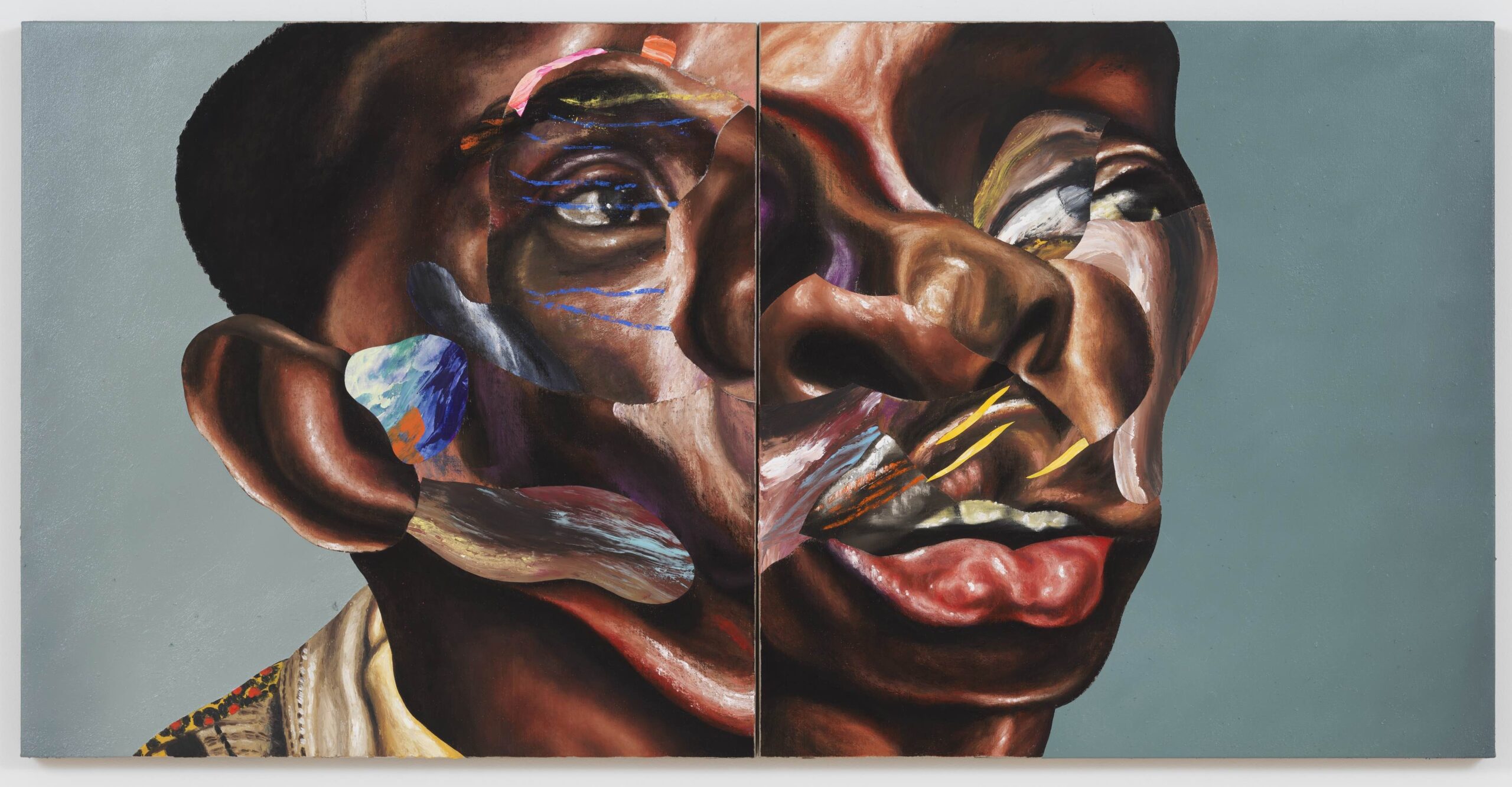Curated by Ekow Eshun, the exhibition features 55 contemporary works of sculpture, painting and drawing by 22 African diasporic artists working in the UK and America
 Photography by Rob McKeever. Courtesy Gagosian featuring Father Stretch My Hands by Nathaniel Mary Quinn (2021) © Nathaniel Mary Quinn
Photography by Rob McKeever. Courtesy Gagosian featuring Father Stretch My Hands by Nathaniel Mary Quinn (2021) © Nathaniel Mary Quinn
Words by Dorothea Gundtoft
The spring exhibition, The Time is Always Now: Artists Reframe the Black Figure, heralds 22 leading African diasporic artists, featuring contemporary works of paintings, drawings and sculptures including works displayed in the UK for the first time.
Founded in 1856, the National Portrait Gallery is filled with stories using art to bring history to life through portraits of leading icons. More than 55 contemporary works explore the depiction of the black form within portraiture, curated by Ekow Eshun, former director of the Institute of Contemporary Arts.
Five years in the making, the title of the exhibition was taken from an essay on desegregation by the American author and civil rights activist, James Baldwin, as the curator explains. ‘Black artists are experiencing a moment of flourishing – with work existing within an evolving artistic lineage.’
 Photography courtesy of North Carolina Museum of Art, Raleigh featuring The Marchioness by Toyin Ojih Odutola (2016) © Toyin Ojih Odutola. Courtesy of the artist and Jack Shainman Gallery New York
Photography courtesy of North Carolina Museum of Art, Raleigh featuring The Marchioness by Toyin Ojih Odutola (2016) © Toyin Ojih Odutola. Courtesy of the artist and Jack Shainman Gallery New York
The display is split into several colour-coordinated areas, designed by JA projects, an architectural company working at the intersection of urban strategy, art and performance, and founded by the co-curator of the 2023 British Pavilion, Jayden Ali. It begins with a dark denim-blue entrance named Double Consciousness, inspired by a theory first introduced by the African American sociologist, W.E.B Du Bois, in 1903, where works explore the concepts of being, belonging and Blackness as a psychological state. This section examines the ways in which artists see themselves, navigating real and imagined identities.
The section explores perpetuated stereotypes with a new work by British artist, Thomas J Price created especially for The Time is Always Now. The fictional female picture, titled As Sounds Turn to Noise, challenge the concept of memorialisation in Britain of Black people within art history. Stereotypes are represented in Lorna Simpson’s Piece Rope Chain, revealing the under-representation of Black people within art history. Noah Davis’ Black Wall Street refers to a moment in 1921 when it became the site of a two-day-long massacre by a white mob, one of the worst incidents of racial violence in American history.
The second part of the exhibition uncovers the theme; Persistence of History. The artist Kimathi Donkor represents the forgotten stories of those who fought for freedom in Nanny of the Maroons’ Fifth Act of Mercy by bringing to life the narrative of Queen Nanny. She led the maroon guerillas that fought the British in Jamaica during the 1700s using a composition borrowed from a portrait of a sitter whose family were involved with enslaving people. Lubaina Himid’s painting Le Rodeur: The Exchange, tells the story of a case of blindness that struck a French slave ship in 1819 – without the sight of the slaves, they were deemed worthless and thrown overboard to drown.
 Photography by Andy Keate featuring Le Rodeur: The Exchange by Lubaina Himid (2016) © Lubaina Himid. Courtesy of the artist and Hollybush Gardens, London
Photography by Andy Keate featuring Le Rodeur: The Exchange by Lubaina Himid (2016) © Lubaina Himid. Courtesy of the artist and Hollybush Gardens, London
The third theme is Aliveness, represented by a brilliant lime-green carpet with matching sofas, representing the vibrancy of the paintings perfectly. Even though this part of the exhibition is joyful, references are still made to the opposition of Black sociality and histories of segregation. The artist, Toyin Ojih Odutola, depicts wealthy Black figures in fictional homes to showcase the social construct of class in relation to race, sexuality and gender.
The curator, Ekow Eshun, finishes with a thoughtful statement that illuminates the need for change. ‘My hope is that the exhibition encourages people to look more closely at the complexity of Black life through figuration, simultaneously asking searching questions about race, identity and history. All while creating artworks that are never less than dazzling.’
The exhibition runs from the 22 February – 19 May 2024 traveling after to The Box in Plymouth from 29 June – 29 September 2024
Get a curated collection of design and architecture news in your inbox by signing up to our ICON Weekly newsletter


















